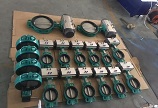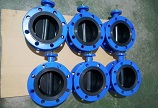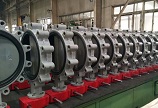24/7 Emergency Service
+86 185 2662 3967
Contact Us Now!
24/7 Emergency Service
+86 185 2662 3967
Contact Us Now!
Nov. 03, 2021
Check valves are devices that allow only a one-way flow of fluid. They have two ports, one for the inlet of the medium and one for the output of the medium. As they only allow the medium to flow in one direction, they are often referred to as "check valves" or "non-return valves". The main purpose of a non-return valve is to prevent backflow through the system.
Check valves rely on differential pressure to operate. They require the pressure on the input side of the valve to be higher than the pressure on the output side in order to open the valve. When the pressure on the outlet side is higher, the valve will close. The closing mechanism varies depending on the type of valve. They do not require handles, levers, actuators or manual labour to work properly.
They are often installed in applications where backflow can cause problems. They are a cheap, effective and simple solution to a potential problem. However, if the downstream is contaminated, the backflow may contaminate the upstream media. We can install a check valve downstream to prevent this from happening.
Check valves require a minimum upstream pressure (the difference in pressure between the inlet and outlet) to open the valve and allow fluid to pass. The minimum upstream pressure at which the valve opens is known as the check valve "opening pressure". The exact opening pressure will vary depending on the valve design and size, so please ensure that your system is capable of generating this opening pressure and is suitable for the application.
If the upstream pressure is lower than the opening pressure or if there is back pressure (fluid trying to move from the outlet to the inlet), the valve will close. Depending on the design of the check valve, the closing mechanism may change. In short, the back pressure pushes the gate, ball, diaphragm or disc against the orifice and seals it. Depending on the design, the closing process can be assisted by springs or gravity.
As check valves only work in one direction, it is vital to know the correct installation orientation. Very often, there is an arrow on the valve housing to indicate the direction of flow. Otherwise, you need to check the valve to ensure that it is installed in the intended direction of flow. If it is backwards, fluid will not be able to pass through the system and the pressure build-up could cause damage.
On the horizontal or vertical side, it depends on the type of valve design you have. If it has a spring, any direction will work. If it does not have a spring, gravity will affect the operation of the check valve, so making sure you understand the internal components will ensure you install it correctly in either a horizontal or vertical manner.
LIWEI company successfully passed the ISO9001 international quality system certification. We now produces wafer butterfly valves, flanged butterfly valves, gate valves, globe valves, check valves, ball valves, hydraulic control valves and other series of products. Please contact us if you need.
Search Blog
Sep. 08, 2022
Tianjin Liwei Has Professional Valve Production Line
Sep. 07, 2022
Are You Interested in Small Order with Fast Delivery?
Aug. 25, 2022
Keywords

Factory Add.:
No.3 Xintai Road, Jinnan District, Tianjin, China.
Office Add.:
C12 Aliyun Jinnan District, Tianjin, China.
Name: Riven Lee
Mob.: +86 185 2662 3967
E-mail: trading_manager@liweivalve.cn
Name: Ariel Wong
Mob.: +86 186 9809 4027
Name: Kerry Zhang
Mob.: +86 187 2267 7875
Navigation
Products
Leave a Message


